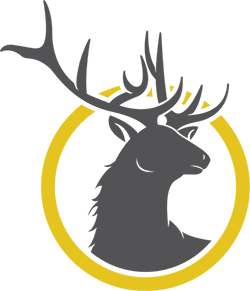Regardless of whether you choose to walk, drive, ride, or pedal, the best way to begin exploring the city is to learn about some of its vibrant regions, each filled with unique attractions and memorable experiences just waiting to be had. We'll start with the heart of the city, its Downtown.
Please bear in mind that Los Angeles is a major urban hub with a seemingly endless number of wonderful neighborhoods worth visiting. And while we'd love to include all of our favorites, we must limit ourselves to just a few. So, with that in mind, here are some of the highlights from the largest downtown areas in LA.

Downtown LA
The centerpiece of the city of Los Angeles and where many cultures are showcased. Some of the city's most prominent architecture can be found here. Here are some of the more popular areas:
Arts District
Bordered by E. 1st St. to the north, 7th St. to the South, S. Alameda St. to the west, and E. 4th St. to the east, this neighborhood was once an industrial area, but was converted into a community of artists in the 1970's. Now, the area is vibrant and features galleries, media and video companies, photography studios, as well as Southern California Institute of Architecture.
Gallery Row
Situated on Main and Spring Streets, between 2nd and 9th, this area is a hub of art and culture. Make sure to be there the second Thursday of the month for the popular Downtown Art Walk.
Bunker Hill & Grand Avenue
This area is the Downtown's cultural heartbeat and is home to many corporate headquarters. The area is centered around Grand Avenue; landmarks in the neighborhood include the Museum of Contemporary Art, Walt Disney Concert Hall, L.A. Central Library, and the Colburn School of Music.
Chinatown
Located northeast of the Bunker Hill and Grand Avenue Area, Chinatown is a charming neighborhood that includes many Asian restaurants, markets, herbal shops, antique shops, art galleries and more. A significant portion of neighborhood is also residential.
Civic Center
This area covers 20 square blocks in the northern part of Downtown and borders Chinatown. It is known as the Administrative heart of the city and has many federal, state, and city governmental offices and courthouses. Be sure to admire the view from atop the L.A. City Hall.
Fashion District
Located just north of I-10 (Santa Monica Freeway), this area is the apparel industry hub on the west coast. Here, designers, shoppers, stylists, retailers, and wholesalers come together. You'll find everything from clothes, accessories, textiles and notions, and more.

Figueroa Corridor
Centered around Figueroa St., this area is home to many world-class museums and architectural landmarks. Make sure to visit the California African American Museum, Natural History Museum, and California Science Center. The area is also home to the University of Southern California, Exposition Park, Shrine Auditorium, and the LA Memorial Coliseum.
Flower District
This flower-lovers paradise is located within the Fashion District. Here you'll find everything from the commonplace to the exotic. A favorite of designers, retail florists, and event planners, it is the largest wholesale flower district in the U.S., with nearly 200 dealers.
Jewelry District
Comprised of nearly 5,000 businesses along Hill St., Olive St., and Broadway between 5th and 8th Streets. A bevy of baubles awaits you at the second largest jewelry district in the world. Shop for diamonds, fine jewelry, individual stones, gems, watches, and more.
Historic Core
Situated between Main St. and Hill St. to the east and west, and 3rd and 9th to the north and south, this area was once L.A.'s city center prior to WWII and is home to a wealth of architectural beauty. Here you'll find pre-1930's structures in Spanish Baroque, Art Deco, and Beaux Arts styles, as well as the largest number of historic theaters anywhere. Make sure to visit the theaters on Broadway, as well as the famous detailed ironwork and cage elevators in the Bradbury Building.
Little Tokyo
This area is located south of US 101 and nestled between the American River to the east and SR 110 to the west. Here, contemporary office buildings, shopping plazas, religious shrines, and theaters exist beside small retail shops and restaurants. Be sure to plan a visit to the Japanese American Cultural and Community Center, the Japanese American National Museum, Geffen Contemporary Museum, and the East West Players.
Olvera Street at Historic El Pueblo
Located right next to Union Station, Olvera St., known as "The Birthplace of Los Angeles", is home to delicious restaurants and cafes, as well as street vendors, gift shops, and numerous cultural festivities. El Pueblo Historic Monument is home to an old world Mexican-inspired plaza as well as a number of historic buildings dating from 1818.
South Park
This neighborhood is bordered by I-110 to the west, E. Vernon Ave. to the north, Avalon Blvd. to the east, and W. Slauson Ave. to the south. Entertainment and convention venues reign supreme in this area, as the STAPLES Center, LA Convention Center, and the Nokia Theater call the neighborhood home. There is also a growing residential community here.

